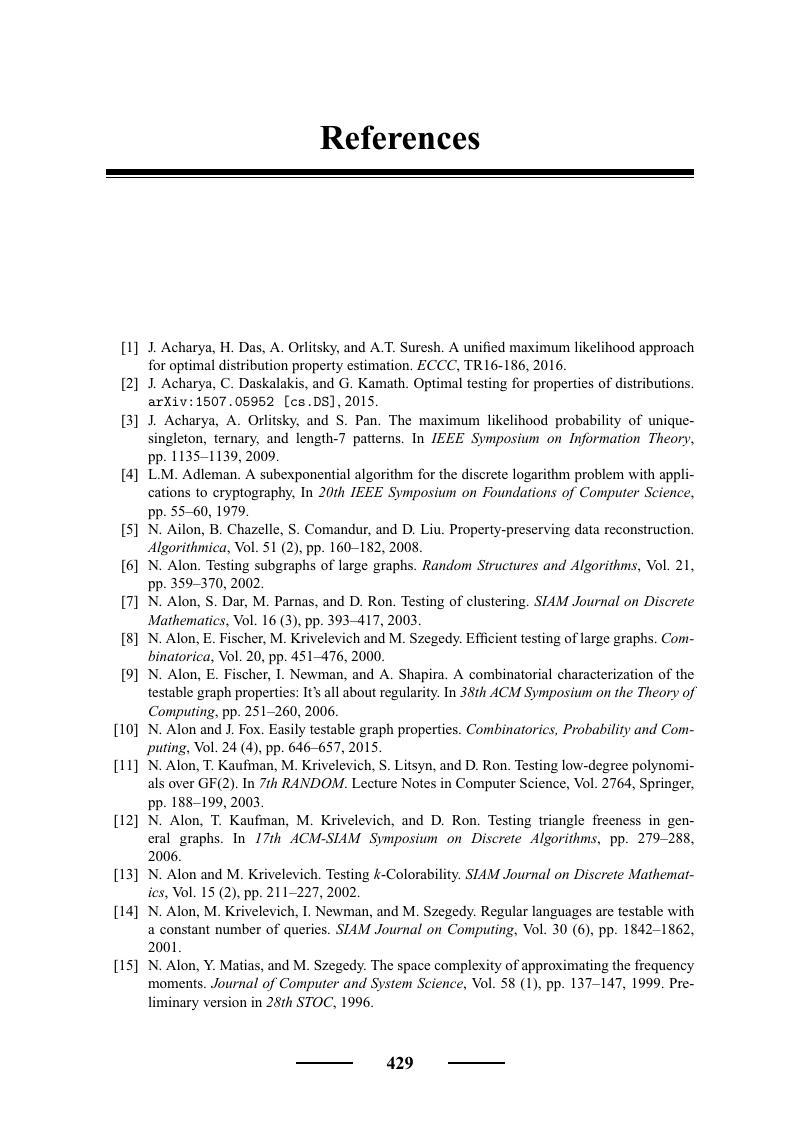Book contents
- Frontmatter
- Contents
- Preface
- Organization and Chapter Summaries
- Notation
- Acknowledgments
- 1 The Main Themes: Approximate Decision and Sublinear Complexity
- 2 Testing Linearity (Group Homomorphism)
- 3 Low-Degree Tests
- 4 Testing Monotonicity
- 5 Testing Dictatorships, Juntas, and Monomials
- 6 Testing by Implicit Sampling
- 7 Lower Bounds Techniques
- 8 Testing Graph Properties in the Dense Graph Model
- 9 Testing Graph Properties in the Bounded-Degree Graph Model
- 10 Testing Graph Properties in the General Graph Model
- 11 Testing Properties of Distributions
- 12 Ramifications and Related Topics
- 13 Locally Testable Codes and Proofs
- Appendix A Probabilistic Preliminaries
- Appendix B A Mini-Compendium of General Results
- Appendix C An Index of Specific Results
- References
- Index
- References
References
Published online by Cambridge University Press: 13 November 2017
- Frontmatter
- Contents
- Preface
- Organization and Chapter Summaries
- Notation
- Acknowledgments
- 1 The Main Themes: Approximate Decision and Sublinear Complexity
- 2 Testing Linearity (Group Homomorphism)
- 3 Low-Degree Tests
- 4 Testing Monotonicity
- 5 Testing Dictatorships, Juntas, and Monomials
- 6 Testing by Implicit Sampling
- 7 Lower Bounds Techniques
- 8 Testing Graph Properties in the Dense Graph Model
- 9 Testing Graph Properties in the Bounded-Degree Graph Model
- 10 Testing Graph Properties in the General Graph Model
- 11 Testing Properties of Distributions
- 12 Ramifications and Related Topics
- 13 Locally Testable Codes and Proofs
- Appendix A Probabilistic Preliminaries
- Appendix B A Mini-Compendium of General Results
- Appendix C An Index of Specific Results
- References
- Index
- References
Summary

- Type
- Chapter
- Information
- Introduction to Property Testing , pp. 429 - 442Publisher: Cambridge University PressPrint publication year: 2017



